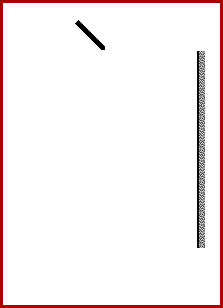
This lesson will focus on what happens when a wave changes media or interacts with an obstacle or another wave. The first interaction we will look at is what happens when a wave hits a barrier. In the following demonstration, we look at a wave pulse reflecting back when it hits the end of a string.

Source: Wave on a string, The University of Colorado – Physics
Set the wave generator to pulse, and use the slider to set the damping to zero. Click "pulse."
What happens to the wave pulse when it hits the clamp at the end of the string?
Click on the "reset" button.
Select "Loose End."
Click "pulse."
What happens to the pulse when it hits the end of the string?
This animation showed what happens in one dimension, but sometimes waves reflect in two or three dimensions. Think about it, what if a water wave or sound or light hits a solid object at an angle?
Watch this animation to find out.

Source: Optics, the Physics Classroom
How does the wave move when it reflects from the surface of the obstacle?